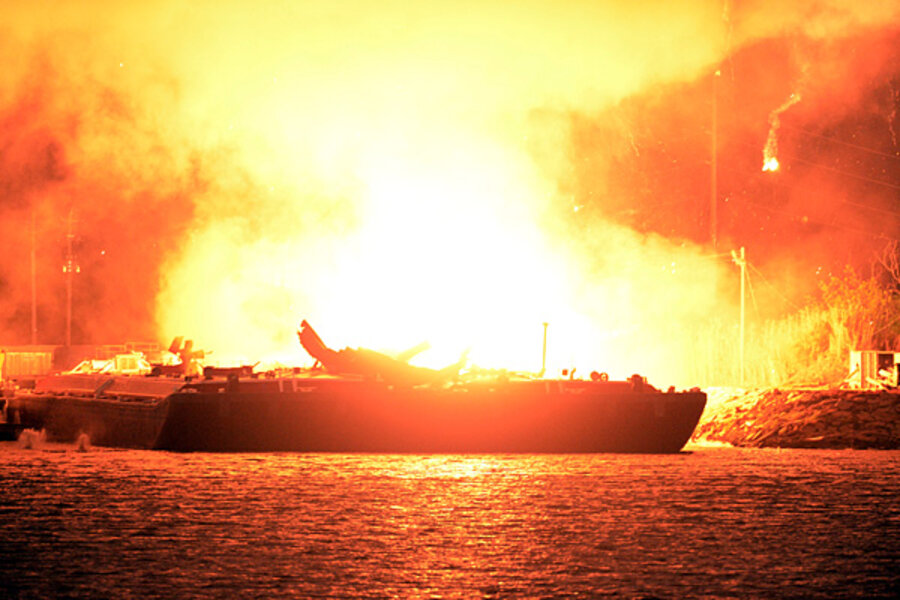Fuel barge explosions underscore risks of fuel transportation
Loading...
Early reports suggest Wednesday's fuel barge explosions on the Mobile River in Alabama were an unfortunate accident, probably the result of a spark igniting a buildup of unrefined gasoline vapors.
But the incident, which injured three people, refocuses attention on America's aging – and sometimes fragile – energy infrastructure. Coming on the heels of an oil pipeline spill in Arkansas and in the middle of a vociferous debate over whether to build a US pipeline for heavy crude oil from Canadian tar sands (also known as oil sands), it brings into question whether the system is up to the task of transporting the nation's newly growing energy wealth.
What are the safest means for transporting the large quantities of oil, natural gas, and gasoline we consume everyday? Do new forms of "unconventional" fuels require a new way of thinking about how we distribute those fuels? Is our energy distribution network capable of meeting today's demand?
"If we're going to integrate new sources of energy into our grid, and move towards energy surety where we’re not beholden to foreign sources, we’re going to have to invest in infrastructure," said John Pappas, interim director of Texas A&M University's Energy Institute in College Station. "I think everyone realizes that."
The American Society of Civil Engineers awarded the nation's energy infrastructure a grade of D plus in their 2013 Report Card on America's Infrastructure, released last month. The country's inland waterways system fared even worse, earning a D minus from the trade association.
"Our nation’s inland waterways and rivers are the hidden backbone of our freight network – they carry the equivalent of about 51 million truck trips each year," the report reads. "In many cases, the inland waterways system has not been updated since the 1950s, and more than half of the locks are over 50 years old."
The barges involved in the Alabama explosions, which carried on into early Thursday morning, were used to transport natural gasoline (unrefined automotive gasoline, not to be confused with natural gas or liquefied natural gas), but officials said they were empty and being cleaned at the time of the explosions.
A cursory review of the US Coast Guard's database of incident investigations suggests these kinds of events are rare. There were 44 incidents involving tank barges over the past year, according to the database. They range from minor personnel injuries to crashes involving the discharge of oil. Among the recent events:
In January, an oil barge on the Mississippi River crashed into a railroad bridge spilling as much as 7,000 gallons of crude and temporarily closing a portion of the river. That was slightly less than a year after an oil barge spilled less than 10,000 gallons of oil into the Mississippi. In 2008, a fuel barge crash dumped 283,000 gallons of heavy crude into the Mississippi and closed the river for six days.
"As we continue to use liquid fuels, they are going to be have to be transported," said Clifford Singer, a co-director of the University of Illinois' initiative in Energy and Sustainability Engineering in Urbana.
Even a switch to cleaner biofuels carries consequences. Because current pipelines do not support ethanol, Mr. Singer said, it is transported along the nation's roads and highways.
"It requires a lot of truck traffic and that constitutes a hazard," he said, "but people probably don't even notice that they’re connected to energy."






